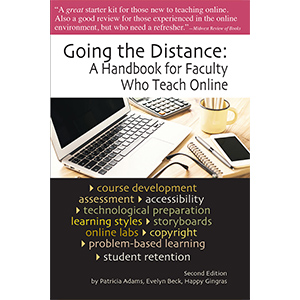Research Built on a House of Cards

John C. Cross and Edie Goldenberg have a new book out about adjuncts. Their book is titled The Ominous Rise of Adjuncts, and the authors have thrown a monkey into the wrench that is the debate concerning both the rise in the number of adjunct faculty, and much of the recent “research” trumpeted by the education unions that “document” the impacts of this “ominous rise.” Put simply, Cross and Goldenberg suggest that there are scads of adjuncts in higher education, because the left hand in higher education hasn’t a clue about what the right hand is doing. Furthermore, it wouldn’t be prudent to use any word other than “scads” to describe the number of adjuncts, because colleges and universities aren’t actually tracking the numbers of faculty off the tenure-track. It’s a hypothesis that gives rise to some chilling thoughts. You see, if we believe Cross and Goldenberg, administrators routinely invent data about the number of non-tenured faculty employed at their institutions, and then send the data dutifully along to the Department of Education. This revelation makes Bernie Madoff’s decades-long little deception look, well, benign.
Enter the AFT, NEA and AAUP stage right.
If Cross and Goldeberg are right, for the past decade the education unions have been using that same invented data from the Department of Education to “educate” America about the “ominous rise” in the number of non-tenured faculty. Education unions have used the invented data to devise organizing drives, political campaigns, political strategies, PR spin, and as a justification for greasing untold numbers of political palms with tens of millions in campaign donations and gifts to convince legislators in states like California, Oregon, Washington, Rhode Island, Vermont, West Virginia and Connecticut that higher education needs legislation to appropriate hundreds of millions of tax dollars so that 75 percent of undergraduate classes are taught by tenure-track faculty.
I don’t know whether to laugh or to cry.
The Cross-Goldenberg book, you see, casts doubt on most everything that has been published about adjuncts over the past decades—papers, theses, dissertations, books and studies that have been based on, or included faculty employment data compiled by, the Department of Education. This includes official statements by academic professional associations. AAUP’s raison d’etre these days is the salvation of tenure through the vilification of “fast food faculty” based, in no small part, on the “documented” growth-in-numbers tracked by Department of Education faculty surveys. Cross and Goldenberg conclude that political strategies, such as the AAUP’s, are based on the “fictitious precision” of the data used to document increases in the number of non-tenured faculty.
Lies. Damn lies. And statistics. Mark Twain was right all along.
Another observation made by the authors is that when college administrators actually do get a handle on how many non-tenured faculty teach at their institutions, perhaps the iconic “poor, exploited” adjunct may end up an endangered species. Cross and Goldenberg, over the course of their research, found that adjuncts at the schools they visited did have offices, benefits and a “reasonable degree of job security,” as the authors write. There’s one important catch, naturally (isn’t there always?). Over the course of researching their book, Cross and Goldenberg flitted among the campuses of a dozen “elite” universities, including Duke and Northwestern. Thus, basing conclusions about the treatment of non-tenured faculty by studying non-tenured faculty on campuses of “elite” institutions is much like about extrapolating facts about overall student-preparedness by studying the undergraduates accepted at Harvard and Yale.
Here’s the bottom line, and it’s a tragic and pathetic indictment of the multi-trillion dollar industry that is American higher education. Cross and Goldenberg write that no one can hope to even begin to address the issues surrounding the employment of oodles of non-tenured faculty until administrators study what non-tenured faculty are doing on their campuses.
The Department of Education posed a simple question: How many non-tenured faculty teach on your campus?
Instead of figuring out how to answer the question accurately and honestly, college administrators “fudged” their results. If these college administrators were our students, and we discovered a similar swindle, we’d fail them for sloppy research and for passing off invented data as accurate.
So where do we go from here?
For starters, once we’re those of us who’ve published writings based on the Department of Education’s suspect data can stop screaming and ripping out our hair, we need to realize that we may have been presented with a once-in-a-lifetime opportunity. Thanks to Cross and Goldenberg, it’s possible that colleges all over the country will design and launch self-studies, and as a result we’ll finally discover exactly how large the adjunct faculty nation really is. In turn, adjunct activists, administrators, unions and legislators will use that data, as my younger son is fond of saying, for good and not evil—to actually benefit non-tenured faculty and the students they teach.








